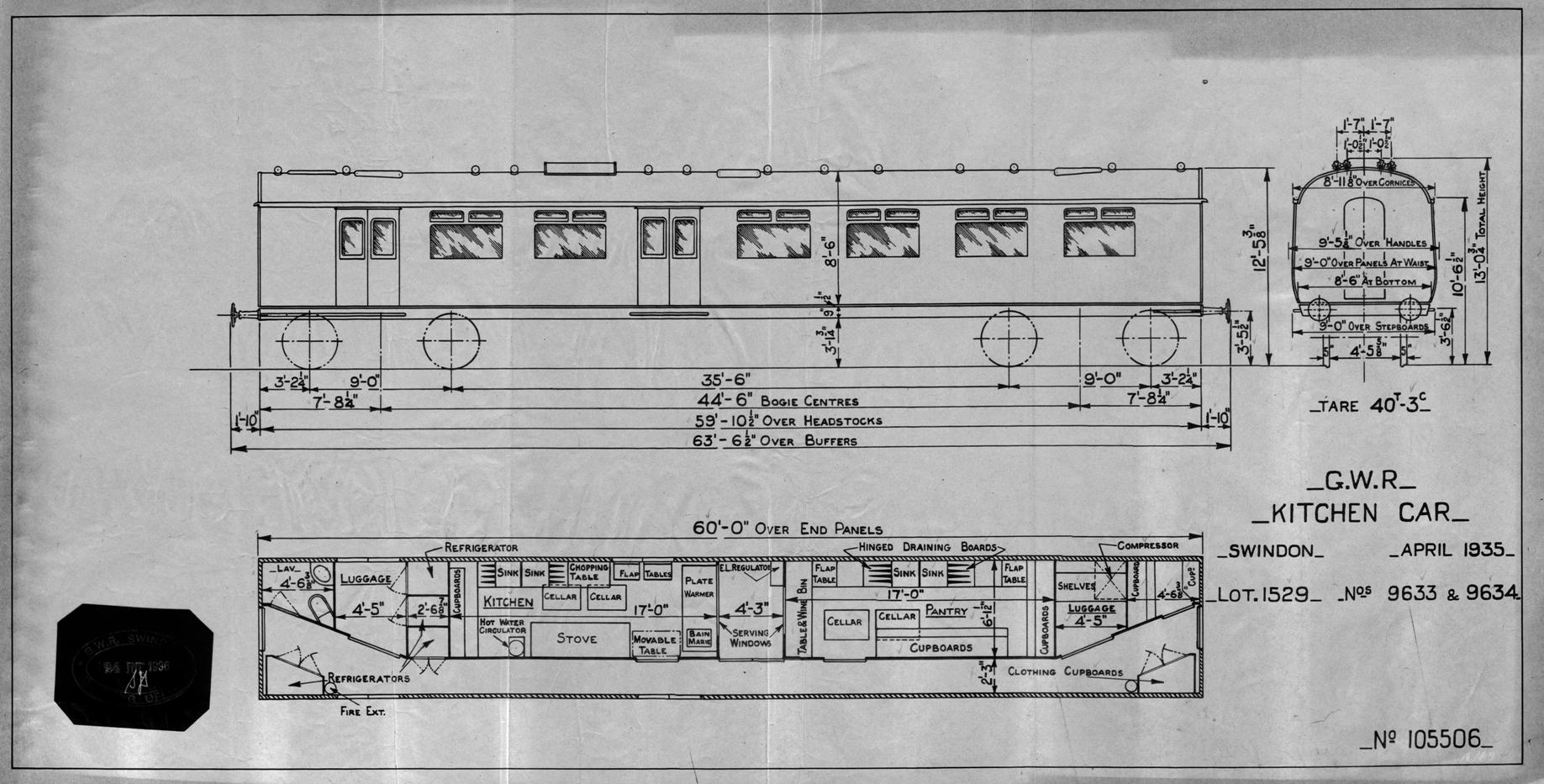| The 1935 Excursion sets were the first purpose built excursion coaches operated by the GWR. Previously excursion trains had been formed of standard coaches. In 1929 50 corridor thirds (diagram C58)
and 12 brake thirds (diagram D104) had been built for form 6 excursion sets of 10 or 11 coaches each. These coaches were virtually indistinguishable when compared to the contemporary C54 and D95 designs.
The 2 purpose built excursion sets of 1935 onwards featured open coaches with a centre corridor, there were tables at each set of seats so that meals could be served to the whole train, rather than a select
few in the Dining Car. In the third class coaches both toilets were at one end of the coach. This resulted in no entrance door at the toilet end. Instead the doors were approximately midway along the coach and at the
other end. In the brake thirds the only passenger doors were at the end with both toilets adjacent, followed by 2 bays of 4 seats on each side, a guard's compartment and luggage area that occupied half
of the coach. Like the Centenary coaches these coaches featured large square cornered picture windows that were opened by lowering the whole window. These windows did not last long. Starting
in about 1938 they were gradually replaced with a fixed pane in a metal frame with sliding ventilators above. At the same time the corners of the frame were changed to rounded corners at the bottom.
The first set had a pair of purpose built kitchen cars and the train was formed: D119 x2, C68x6 and H42x2. An offical photograph of the train shows the formation as D119, C68, H42, C68x4, H42, C68 & D119.
The second set was first formed in 1936 amd only used 2 each of the thirds and brake thirds, the remaining coaches being 4 Dining Thirds (H52) and 2 Kitchen Cars (H49) from the disbanded and just rebuilt articulated sets.
This train was formed D119, H52, H49, H52, C68x2, H52, H49, H52, D119.
The following year additional thirds (C71) were built to replace the Dining Thirds from the articulated sets and increase the number of seats in the second set. These had the later design of window
from the start, but with square corners at the bottom.
Two further excursion sets followed in 1937. In addition to the 10 coach sets there were 15 additonal spare thirds and a pair of spare kitchen cars which could be used to lengthen any of the excursion sets.
As you'd expect with the GWR the design of the coaches was not the same. The brake thirds had twice the number of seats and a smaller luggage area.
The third class coaches had toilets at opposite ends; one on each side with an entrance door opposite. The mid door was retained. To accomodate the repositioned toilet on one side there was a half-bay seat for 2
with a table at each end.
|










